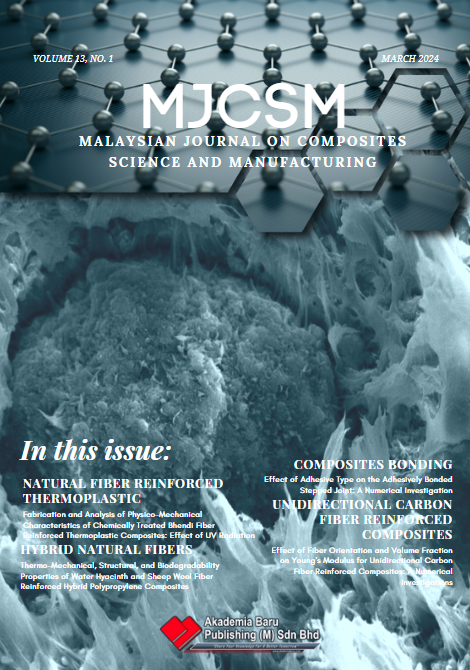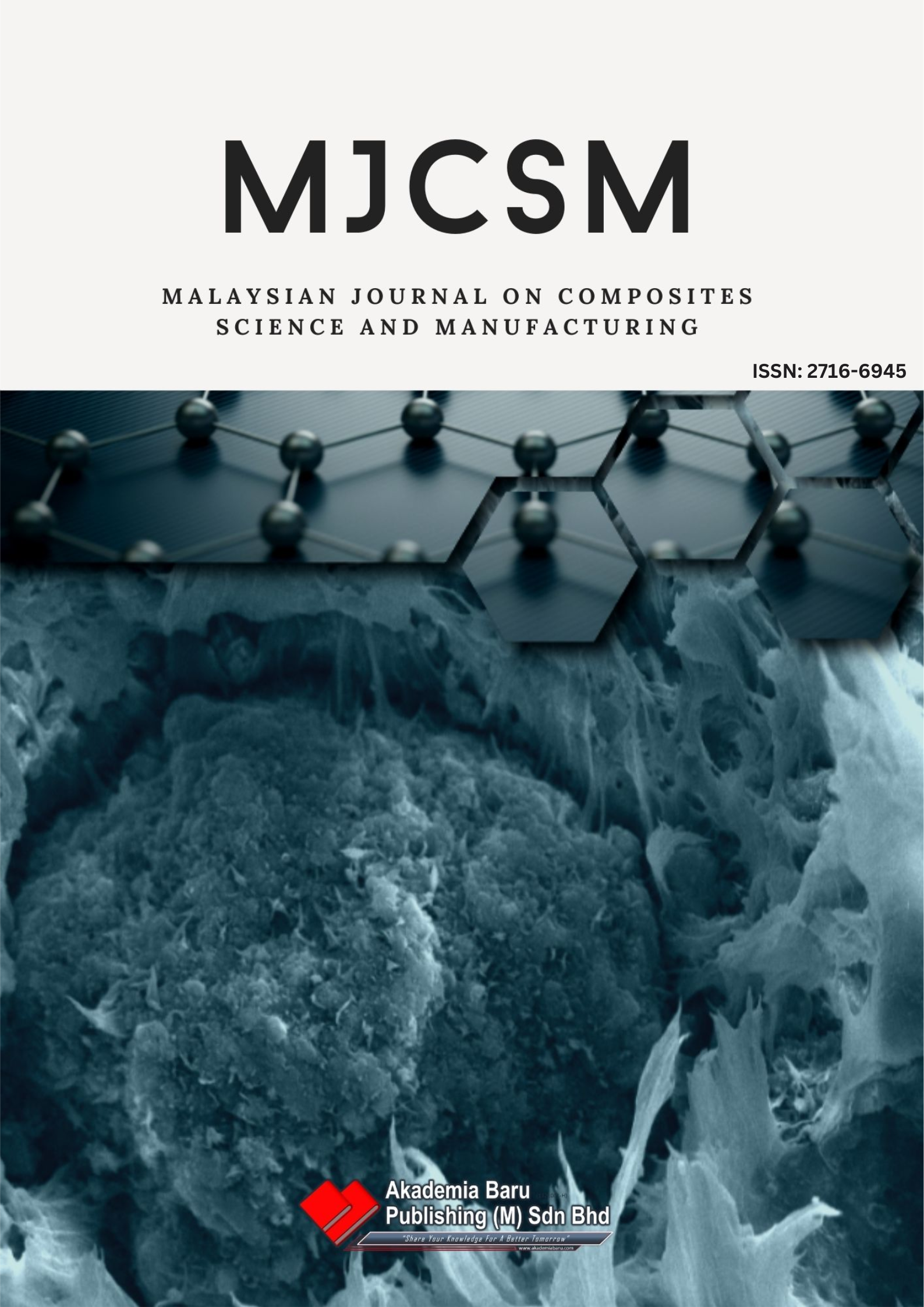Thermo-Mechanical, Structural, and Biodegradability Properties of Water Hyacinth and Sheep Wool Fiber Reinforced Hybrid Polypropylene Composites
DOI:
https://doi.org/10.37934/mjcsm.13.1.1424Keywords:
Polypropylene Hybrid Composites, Natural Fiber, Mechanical Properties, Thermal Properties, BiodegradabilityAbstract
Hybrid fiber reinforcements can incorporate a wider array of qualities than single fiber reinforcement. Instead of synthetic fibers, applying plant and animal-based organic materials as reinforcement in polymer matrix offers certain benefits, such as low price, greater availability, and better biodegradability. In the present study, water hyacinth fiber and sheep wool fiber reinforced polypropylene hybrid composites were fabricated at three different (5, 10, and 15 wt.%) fiber loading. The effect of fiber loading on thermo-mechanical, structural, and biodegradability properties was subsequently investigated. The manufacturing process of the composite material was carried out with utmost consideration for biodegradability, since polypropylene, the primary constituent, is not inherently biodegradable. The insertion of fibers into the polypropylene matrix showed variance in properties of different aspects. The tensile strength of the composites displayed a downward trajectory (from 25 to 10 MPa) with a 15% increase in fiber loading due to voids, and fiber dispersion, while impact strength exhibited an opposite trend (from 25 to 32 J/m). Except for hardness, all the mechanical properties degraded slightly after the employment of the reinforcement. Fourier transform infrared spectroscopic analysis revealed the movement of typical peaks and the appearance of new peaks demonstrating the bonding between the fiber and the matrix. Thermogravimetric analysis showed that the thermal degradation temperature of the composites improved at maximum fiber loading. On the other hand, the goal of achieving biodegradability has been succeeded by the implementation of a combination of plant and animal-based fibers as biodegradability of the manufactured composites thrives with increasing fiber content for the presence of cellulosic bonds, as evident from the FTIR spectrum. Even though some properties of the hybrid composite declined slightly with increasing fiber loading, the other characteristics, including service temperature and biodegradability experienced a prospective advancement. Hence, the 15% fiber-loaded composite was found to be a potential candidate in terms of slightly high temperature and environment-friendly applications.
Downloads












